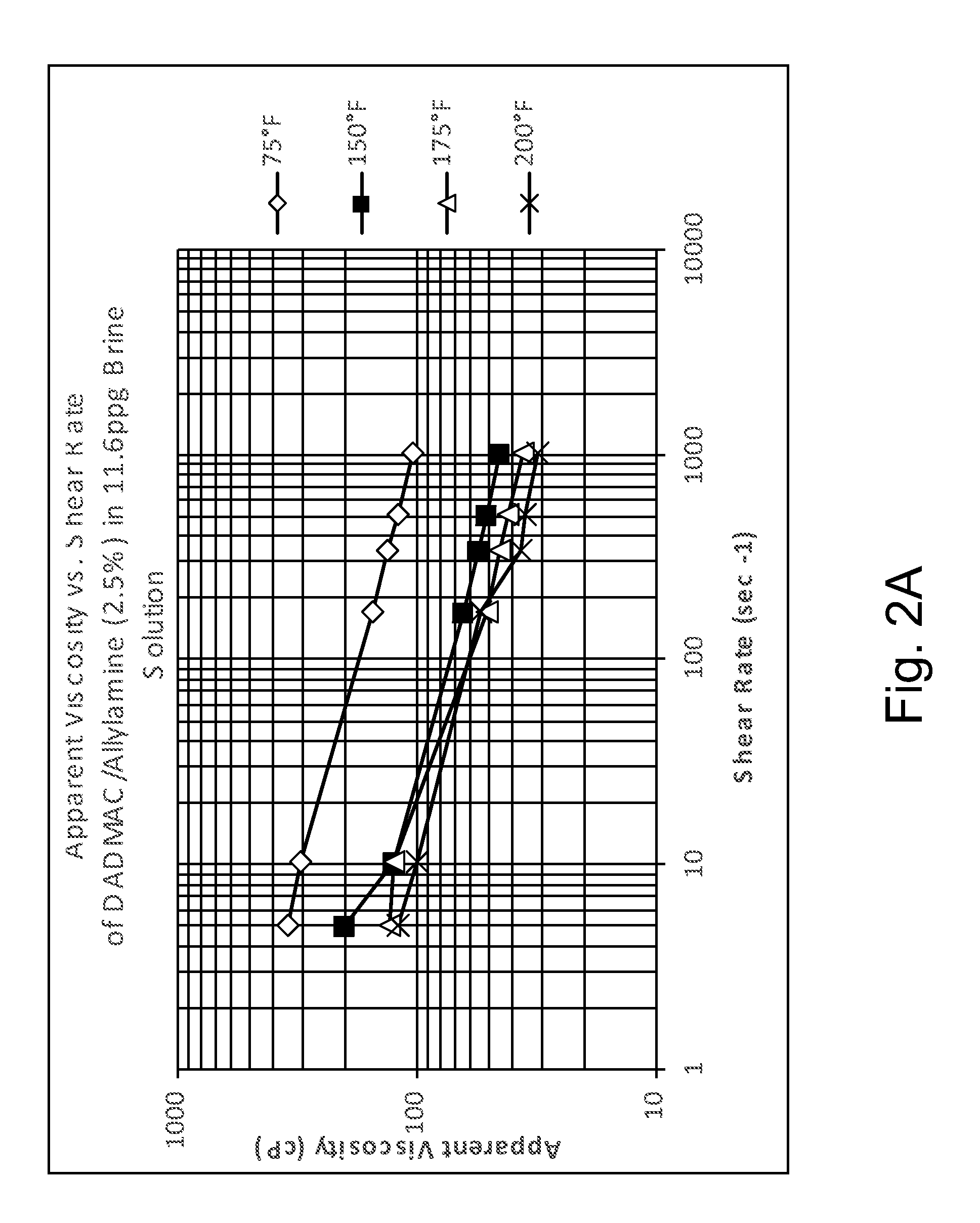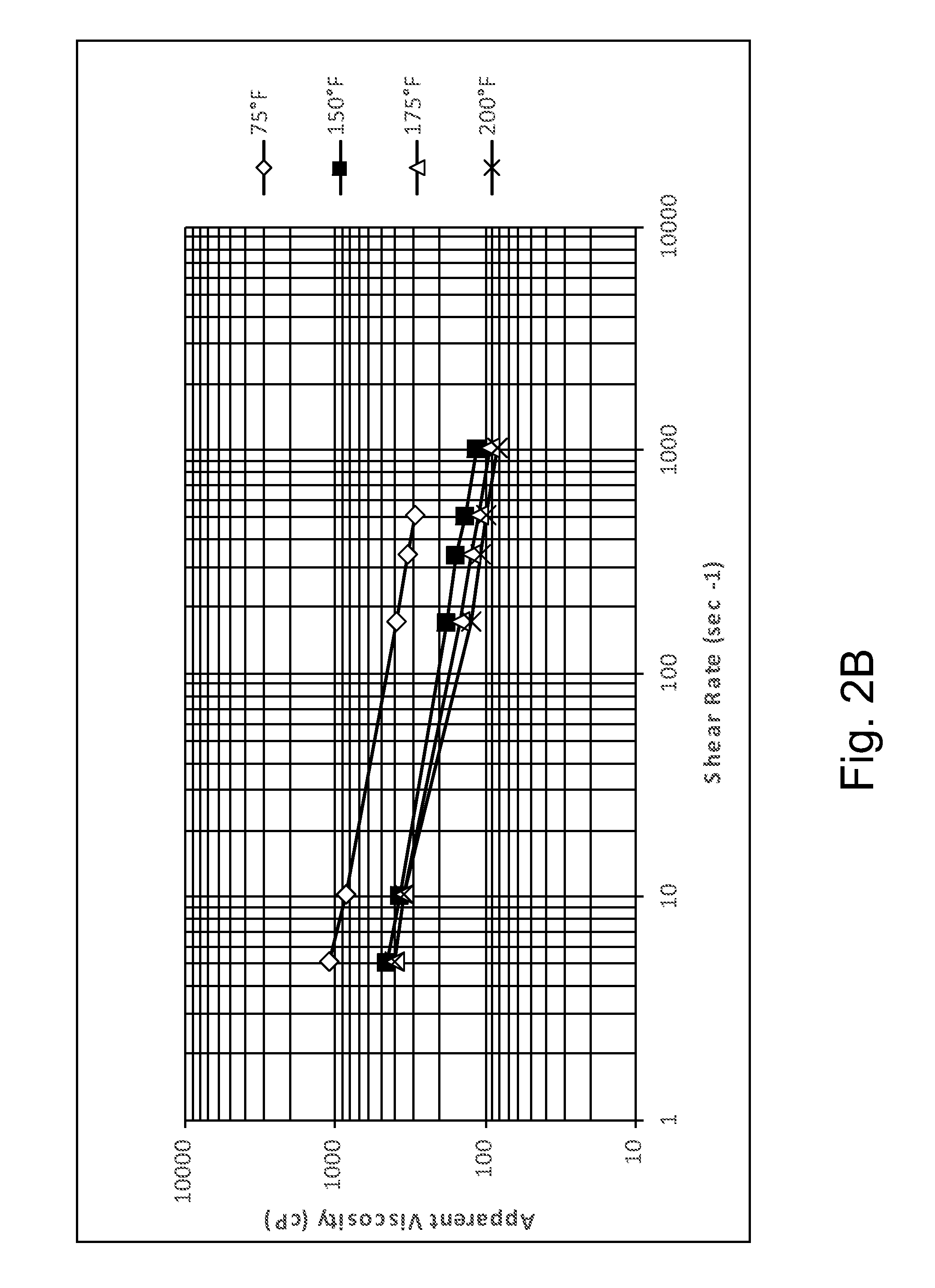Rheology modifying agents and methods of modifying fluid rheology use in hydrocarbon recovery
a technology of modifying agent and fluid, which is applied in the direction of chemistry apparatus and processes, wellbore/well accessories, sealing/packing, etc., can solve the problems of reducing the efficiency of transferring energy from the pump to the face of the drill bit, affecting the recovery of hydrocarbon recovery, etc., to achieve stable rheology modifying agent, and increase the viscosity of the fluid
- Summary
- Abstract
- Description
- Claims
- Application Information
AI Technical Summary
Benefits of technology
Problems solved by technology
Method used
Image
Examples
experimental examples
[0065]Acidic Environments. Table 1A sets forth the results of viscosity studies for a polyDADMAC homopolymer, a copolymer of DADMAC and n-vinylformamide (NVF), and a copolymer of DADMAC and acrylamidopropyltrimethylammonium chloride (APTAC) in deionized water having a weight percent acid as indicated. In general, in the case of copolymers of the present invention, the weight percentages of the comonomers used in preparing the copolymer are provided in parenthesis following the copolymer designation. Thus, the copolymer DADMAC / NVF (95 / 5 mole %) was prepared with 95 mole % DADMAC and 5 mole % NVF. Table 1B and FIG. 1A set forth the results of Brookfield rheometer studies of a copolymer of DADMAC and allylamine. As illustrated, for example, in FIG. 1A, the copolymer exhibits typical shear-thinning, non-Newtonian behavior.
TABLE 1APoly. Conc.% AcidViscosityPolymer(mole %)(wt %)(cP)DADMAC52897.5HomopolymerDADMAC / NVF5155934(95 / 5 mole %)DADMAC / APTAC515148.5(95 / 5 mole %)
TABLE 1BDADMAC / Allyla...
PUM
 Login to View More
Login to View More Abstract
Description
Claims
Application Information
 Login to View More
Login to View More - R&D
- Intellectual Property
- Life Sciences
- Materials
- Tech Scout
- Unparalleled Data Quality
- Higher Quality Content
- 60% Fewer Hallucinations
Browse by: Latest US Patents, China's latest patents, Technical Efficacy Thesaurus, Application Domain, Technology Topic, Popular Technical Reports.
© 2025 PatSnap. All rights reserved.Legal|Privacy policy|Modern Slavery Act Transparency Statement|Sitemap|About US| Contact US: help@patsnap.com



